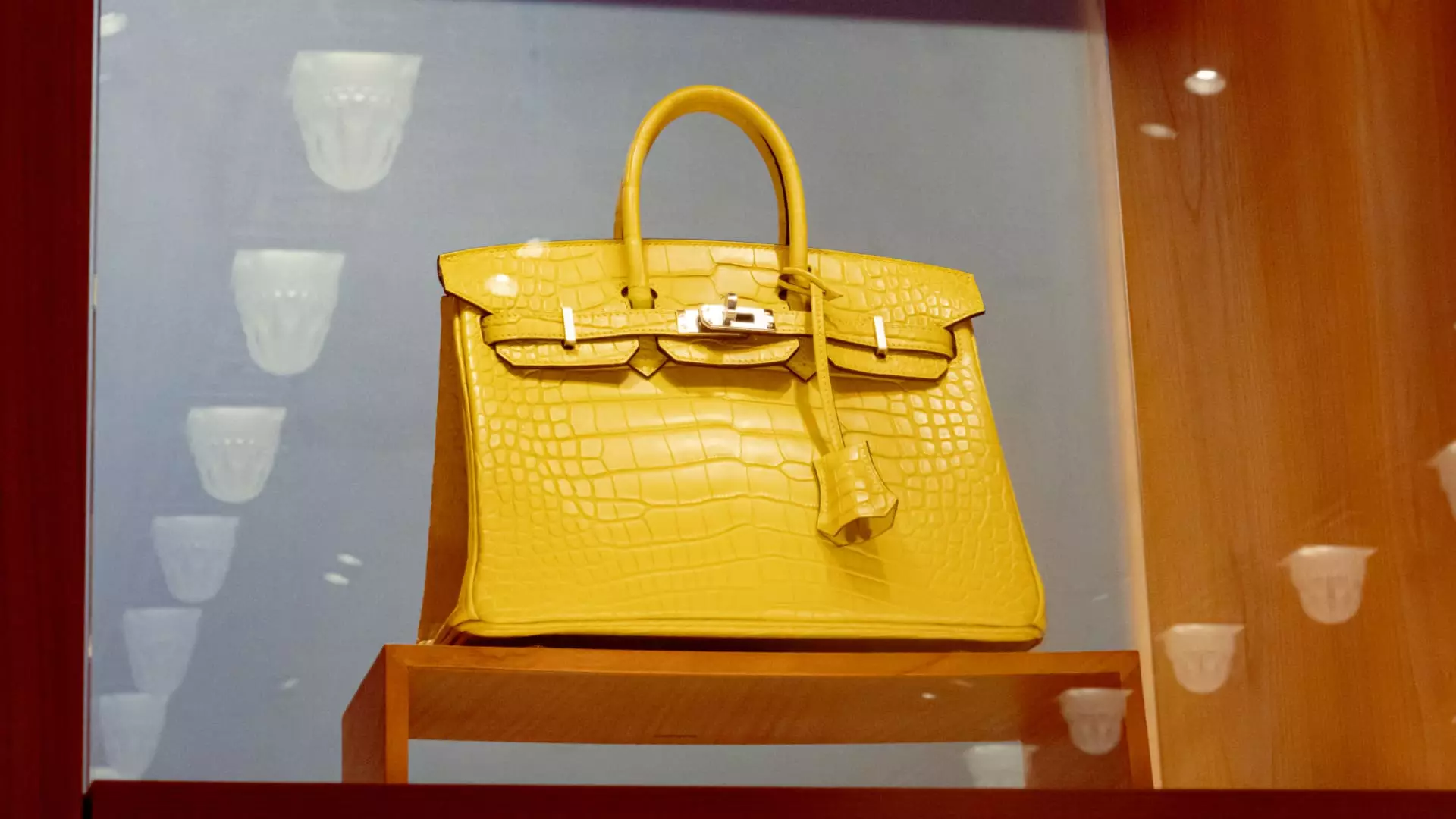Hermes, the iconic haute couture fashion house renowned for its Birkin handbags, has demonstrated its resilience amid a turbulent luxury sector by reporting remarkable growth in its fourth-quarter sales. For the period ending December 31, the company recorded a substantial year-on-year revenue increase of 17.6%, bringing in 3.96 billion euros, which surpassed analysts’ predictions of 3.69 billion euros. This impressive performance highlights not only the brand’s stronghold in the luxury market but also its ability to attract and retain a devoted clientele despite economic uncertainties.
In addition to its robust quarterly earnings, Hermes reported a full-year revenue increase of 14.7%, achieving 15.2 billion euros, also exceeding market expectations. Such numbers reflect not merely a fleeting trend but rather a sustained interest in luxury products amid a potentially declining disposable income among consumers. The surge in company shares by 4.19% upon the announcements underscores investor confidence in Hermes’ prospects, even as broader luxury markets face headwinds characterized by rising costs and an overarching lack of innovation.
One of the most significant factors in Hermes’ enduring success has been its commitment to maintaining an aura of exclusivity and luxury. Executive Chairman Axel Dumas emphasized in his statements that loyalty from their customer base played a pivotal role in achieving these sales figures. In stark contrast to competitors who struggle with customer engagement due to market saturation and product proliferation, Hermes continues to position itself as a prestigious brand that transcends fleeting trends. The focus on quality craftsmanship and heritage keeps customers returning, fostering an environment where exclusivity can still thrive.
As Hermes looks ahead, the company has indicated that it anticipates further revenue growth in 2025. Although specific projections were not disclosed, Dumas expressed optimism about the year ahead, signifying that the brand is entering 2024 “with confidence.” Moreover, sales growth was not isolated to one region; all global markets contributed positively, with the Asia-Pacific region excluding Japan showcasing a notable 9% increase. This success in a region often linked to economic volatility speaks volumes about Hermes’ adaptability and strategic positioning.
Particularly noteworthy is Hermes’ leather goods and saddlery segment, which comprises nearly half of total revenues and saw an impressive growth rate of 21.7% in the fourth quarter. This exemplifies the brand’s strength in a category where it has traditionally excelled, highlighting consumer appetite for timeless luxury items. Dumas acknowledged that despite the uncertainties surrounding the broader luxury market, Hermes’ robust performance stands as a testament to the enduring appeal of its offerings.
Despite the positive sales trends, Dumas cautioned that it may still be premature to predict a turning point in the luxury sector as a whole. The complexities arising from geopolitical tensions and fluctuating economic conditions continue to pose challenges. Nonetheless, Hermes has emerged as a beacon of resilience, showcasing that the luxury market is far from monolithic. The implications of Hermes’ performance are far-reaching, suggesting that brands able to uphold their exclusivity and deliver authentic luxury experiences will continue to thrive, even in uncertain times.


Leave a Reply